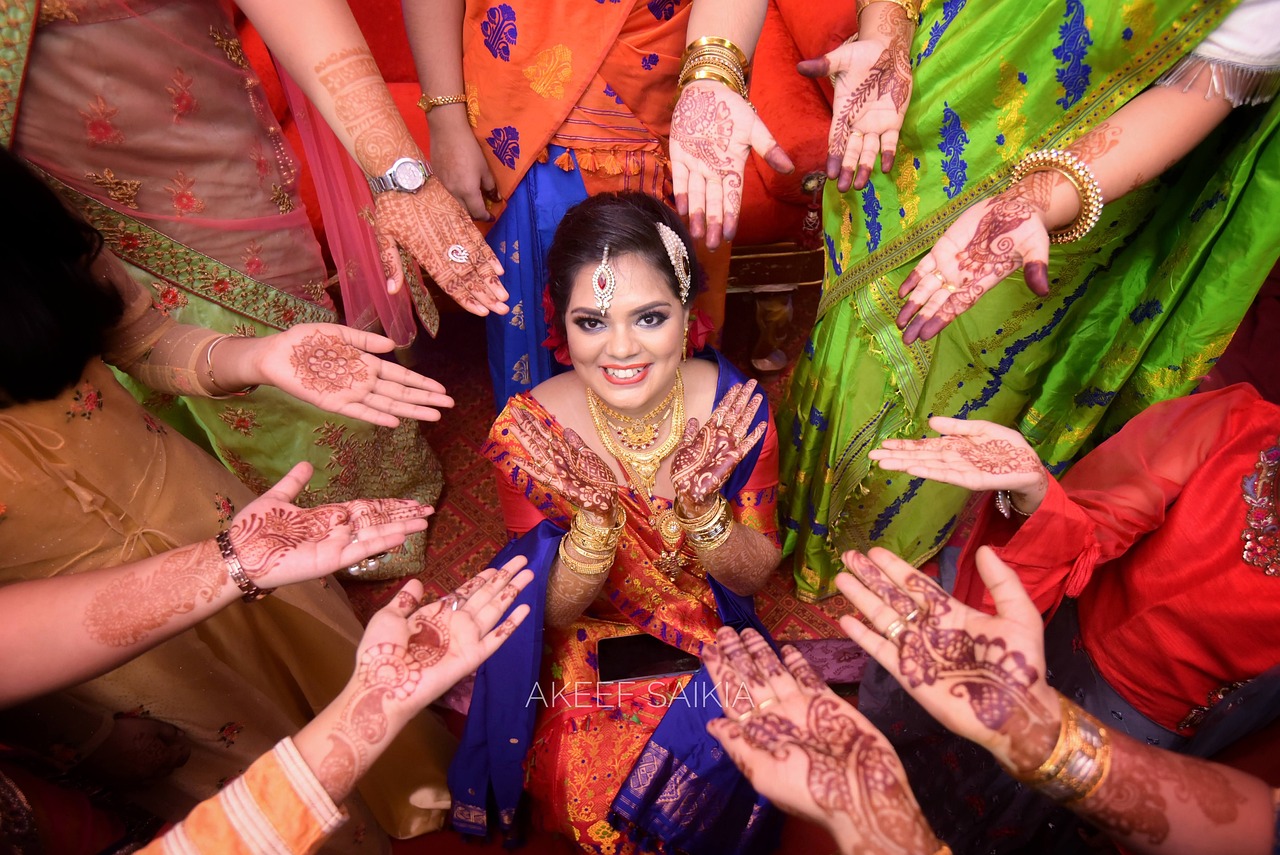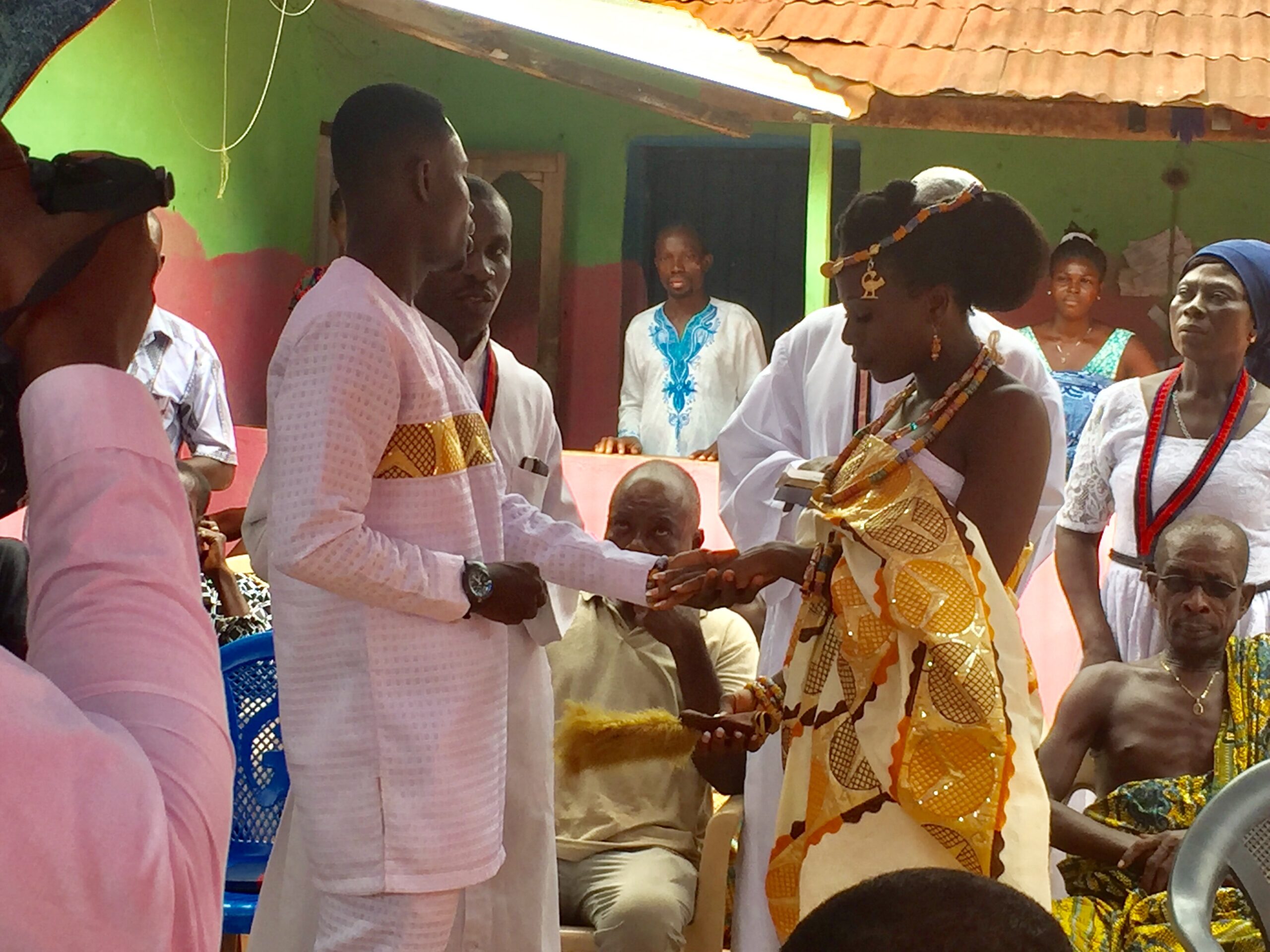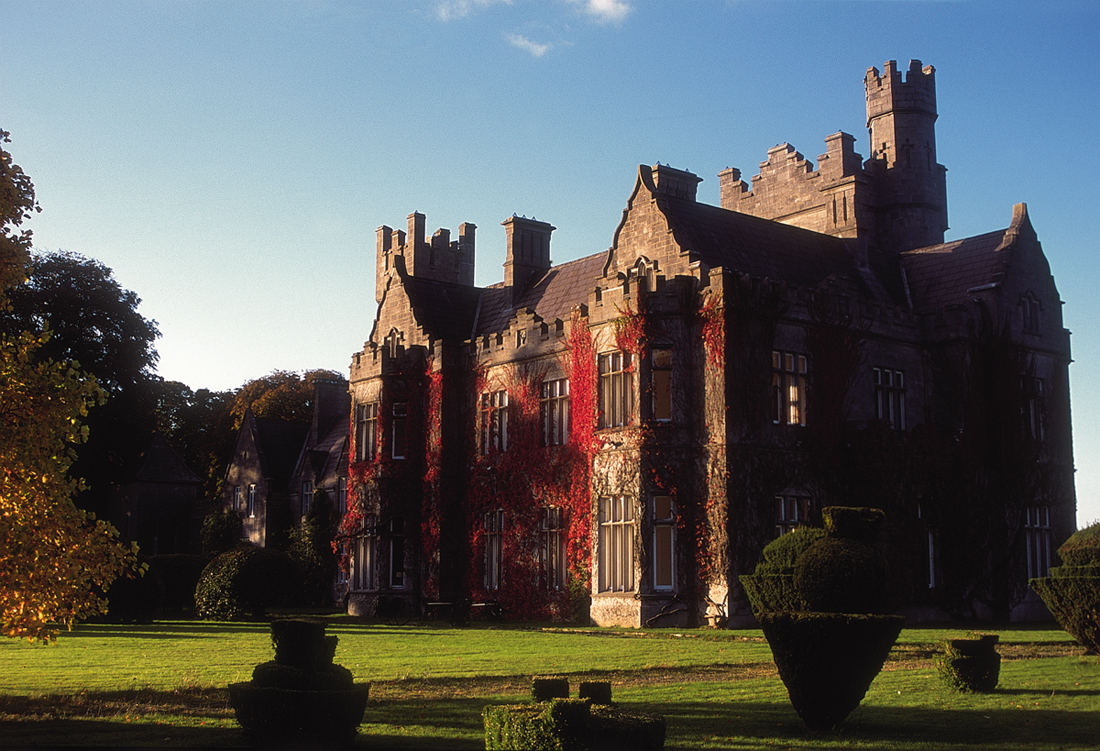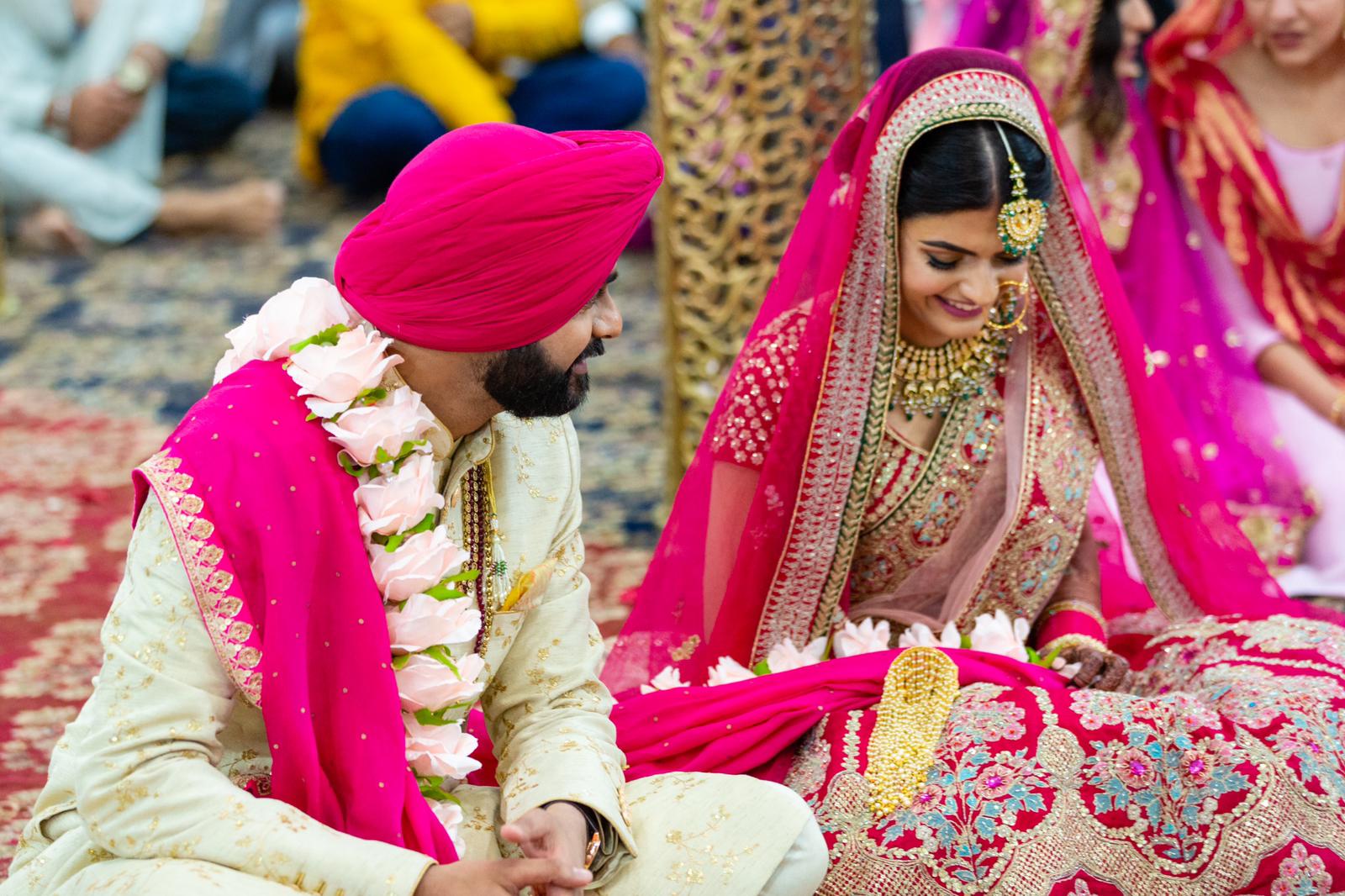India, a country renowned for its diverse cultures and traditions, is a treasure trove of vibrant celebrations. Of these, perhaps none are as deeply ingrained or as extravagantly celebrated as Indian weddings. A riot of colors, emotions, rituals, and music, Indian weddings are truly a spectacle to behold. The sheer diversity of customs across different regions and religions is nothing short of awe-inspiring. Each wedding is a unique tapestry of age-old traditions, woven together to create an event that’s as deeply personal as it is communal.
In this blog post, we will delve into the heart of this beautiful diversity, taking you on a fascinating journey through the world of “Indian Wedding Traditions.”
1. The Allure of North Indian Weddings: Unraveling the Vedic Rituals
The north of India, with its vast array of cultures, boasts a rich history of wedding traditions. Rooted deeply in Vedic rituals, the weddings here exemplify the traditions that have been passed down through generations.
The hallmark of a North Indian wedding is the ‘Saat Pheras’ or ‘Seven Circumstances.’ This integral ritual involves the bride and groom taking seven rounds around the sacred fire, known as ‘Agni.’ Each round signifies a unique vow, a promise that the couple makes to each other, encompassing aspects such as duty, prosperity, and mutual love. The fire acts as a divine witness, sanctifying these vows.
Exchanging garlands or ‘Jaimala’ is another crucial element of North Indian weddings. This playful ritual involves the bride and groom attempting to garland each other, often with their respective parties lifting them up to make it harder for the other. This act symbolizes their acceptance of one another.
However, it’s not just the wedding day that’s filled with significant rituals. The celebrations start much in advance with ‘Roka’ or the unofficial engagement, followed by ‘Sangeet,’ an event dedicated to singing and dancing. These events make the wedding not just a union of two individuals, but a true celebration of two families coming together.
Interestingly, North Indian weddings also have a bittersweet tradition known as ‘Vidaai.’ Post-wedding, as the bride leaves her parental home, she throws a handful of rice over her shoulder, symbolizing that she’s repaying her debt to her parents for nurturing her.
Each ritual carries a deep significance, contributing to the charm and allure of North Indian weddings. These traditions aren’t mere ceremonies but threads that weave the beautiful fabric of marital union, giving us an insight into the cultural richness that North India possesses.
2. The Grandeur of South Indian Weddings: A Testament to Simplicity and Elegance
South Indian weddings, though subdued compared to their North Indian counterparts, are no less grand in their elegance and charm. Rooted in simplicity, these weddings emphasize spirituality, showcasing a unique blend of rites that echo the region’s deep cultural heritage.
Perhaps the most distinguishing feature of a South Indian wedding is the ‘Kanyadaanam.’ In this poignant ritual, the bride’s father washes the feet of the groom, symbolizing the groom’s divine status. Following this, he hands over his daughter to the groom, trusting him with her well-being and happiness.
One striking visual element of South Indian weddings is the ‘Thaali’ or ‘Mangalsutra,’ a sacred necklace that the groom ties around the bride’s neck. This necklace, made of gold and strung with black beads, symbolizes the marital status of the woman and is revered as a protective amulet.
An interesting South Indian wedding custom is the ‘Oonjal’ or ‘Swing Ceremony.’ The newlyweds are made to sit on a decorated swing, and as they sway, elders of the family throw colored rice balls around them to ward off evil spirits. The rhythmic motion of the swing is symbolic of the couple’s journey through life, marked by highs and lows yet always together.
The South Indian wedding feast served on a banana leaf, is also an integral part of the celebration. The lavish spread typically comprises multiple courses, each dish meticulously prepared and reflective of the region’s culinary richness.
In the tapestry of Indian wedding traditions, South Indian weddings stand out with their minimalist elegance and meaningful rituals. They are a testament to the beauty that lies in simplicity, a perfect mirror of the tranquil and serene culture of Southern India.
3. East Indian Weddings: A Symphony of Traditions and Celebrations
East Indian weddings, particularly in the state of West Bengal, are famed for their eclectic mix of rituals that beautifully marry tradition and celebration. These weddings are a vivid demonstration of the region’s cultural richness and aesthetic sensibilities.
A distinctive ritual in Bengali weddings is ‘Shubho Drishti.’ In this tradition, the bride, with her face covered by a leafy betel plant, is carried on a peeri (wooden platform) by her brothers around the groom in seven circles. Following this, the bride removes the plant and locks her eyes with the groom in a soulful gaze. This ritual, laden with anticipation and emotion, is the first time the couple sees each other on their wedding day.
Another unique ritual is ‘Mala Bodol,’ where the bride and groom exchange garlands, signifying their mutual acceptance. This exchange takes place twice – first, the groom garlands the bride, followed by the bride garlanding the groom. The repetition signifies the equality and balance in their impending marital relationship.
Akin to North Indian weddings, Bengali weddings also include a ‘Vidaai’ ceremony, but with a twist. In ‘Kanakanjali,’ the bride throws a handful of rice without looking back, thanking her parents for her upbringing and asking for their blessings.
East Indian weddings resonate with a charm uniquely their own. They beautifully capture the cultural and aesthetic richness of the region, underlining the essence of Indian wedding traditions – the celebration of unity, familial bonds, and cultural heritage.
4. West Indian Weddings: A Mélange of Vibrancy and Joy
West Indian weddings, particularly those from the state of Rajasthan and Gujarat, are known for their festive spirit and vibrant rituals. These weddings are often a riot of colors, resounding with music and dance, reflective of the region’s vivacious culture.
A distinctive pre-wedding ritual in Rajasthani weddings is the ‘Ghoomar’ dance. An all-women event, this traditional folk dance is performed by the bride’s side, creating an atmosphere of joy and excitement. The swirling movement and the colorful attire make this a truly mesmerizing spectacle.
One of the primary ceremonies of a Gujarati wedding is the ‘Madhuparka.’ In this ritual, the groom is presented with a bowl of honey and yogurt symbolizing sweetness and purity. He is expected to share it with his bride, setting a precedent for a harmonious life together.
A unique and fun-filled ritual observed in Gujarati weddings is the ‘Jaimala’ or garland exchange ceremony. However, before the bride and groom can put the garland on each other, they are lifted by their respective friends and family, making it a playful contest to see who garlands the other first.
Another noteworthy ceremony in a Gujarati wedding is the ‘Mangal Phera.’ Similar to the ‘Saat Pheras’ in North Indian weddings, the couple circles the holy fire four times. But what makes it special is the couple’s race after the final round – it is believed that whoever sits first will rule the household!
West Indian weddings are a testament to the region’s vibrant and joyous culture. The lively rituals, music, and dance that permeate these weddings encapsulate the essence of Indian wedding traditions – a celebration of love, unity, and familial bonds, enveloped in a spirit of festivity and joy.
5. Punjabi Weddings: A Riot of Colors and Celebrations
Punjabi weddings, known for their grandeur and exuberance, are filled with fun-filled rituals and celebrations. From the rhythmic beats of the ‘dhol’ to the energetic ‘bhangra’ dance, these weddings truly encapsulate the lively spirit of the Punjabi culture.
An essential pre-wedding ritual in Punjabi weddings is the ‘Mehendi’ ceremony. During this event, the bride’s hands and feet are adorned with intricate henna designs, symbolizing joy, beauty, and spiritual awakening. This is followed by the ‘Sangeet,’ a night filled with music, dance, and laughter, setting the tone for the upcoming wedding festivities.
On the wedding day, the ‘Baraat’ or groom’s procession is a sight to behold. The groom, traditionally mounted on a horse, leads a vibrant procession to the bride’s house, accompanied by the beats of the ‘dhol’ and the joyous dancing of his relatives and friends.
The wedding ceremony itself is centered around the ‘Anand Karaj’ or ‘Blissful Union.’ The couple takes four rounds around the ‘Guru Granth Sahib’ (the holy Sikh scripture), each round signifying a particular love-filled vow. This solemnizes their union not just in the earthly realm but also in the spiritual world.
Punjabi weddings, with their exuberant celebrations and vibrant rituals, hold a special place in the beautiful diversity of Indian weddings. They exemplify the Punjabi culture’s zest for life, their love for music and dance, and their deep-seated reverence for traditions.
6. Muslim Weddings in India: An Ensemble of Grace and Reverence
Muslim weddings or ‘Nikah’ in India, reflect the community’s commitment to simplicity, grace, and religious observance. Rooted in Islamic traditions, these weddings beautifully amalgamate cultural practices with religious rites.
A distinctive element of a Muslim wedding is the ‘Nikahnama,’ a marital contract signed by the bride and groom. This document, containing the terms of the marriage, including the ‘Mehr’ (dowry) to be given to the bride, is a testament to the bride’s rights and the groom’s responsibilities in the marriage.
One of the most emotional moments of a Muslim wedding is the ‘Rukhsati.’ Similar to the ‘Vidaai’ in Hindu weddings, this is when the bride bids farewell to her family and leaves for her new home. As she steps out, a Quran is held over her head by her mother or a senior family member, symbolizing blessings and protection.
Muslim weddings also hold a special ceremony known as ‘Walima.’ This is a grand feast hosted by the groom’s family after the wedding. It serves as a public announcement of the wedding and is an occasion for family and friends to come together and share in the couple’s joy.
Despite the simplicity, Muslim weddings in India are vibrant, with colorful attires, intricate henna designs, and a host of traditional rituals. They perfectly reflect the ethos of the Muslim community in India – a blend of grace, religious observance, and cultural richness.
7. Christian Weddings in India: A Symphony of Elegance and Serenity
Christian weddings in India, though varied in customs depending on the specific community, share common threads that reflect the faith’s ethos. Marked by elegance and serenity, these weddings beautifully intertwine religious rites with Indian customs.
One of the highlights of an Indian Christian wedding is the ‘White Wedding.’ The bride, dressed in a white gown symbolizing purity, and the groom, in a classic suit, exchange vows in a church ceremony. This exchange, presided over by a priest, culminates with the couple exchanging rings, symbolizing their promise of eternal love.
A touching moment in Christian weddings is the ‘Giving Away of the Bride.’ Here, the bride’s father escorts her down the aisle and formally hands her over to the groom, a symbol of entrusting his daughter’s happiness to the groom.
Christian weddings in India also feature a joyous celebration called the ‘Wedding Reception.’ Held after the church ceremony, this event includes a grand feast, cake cutting, and the couple’s first dance, all amidst friends and family.
The elegance and tranquility that permeate Christian weddings in India mirror the faith’s core values of love, unity, and mutual respect. These weddings, in their simplicity and serenity, add a beautiful dimension to the rich tapestry of Indian wedding traditions.
8. Marathi Weddings: A Melange of Simplicity and Vibrancy
Marathi weddings, belonging to the state of Maharashtra in Western India, stand out with their simplicity, vivacity, and adherence to traditional customs. They beautifully exemplify the rich cultural heritage of the Marathi community.
One of the most distinctive rituals in a Marathi wedding is the ‘Antarpat’ ceremony. A silk shawl separates the bride and groom as they are led to the wedding mandap. Once the auspicious time or ‘muhurat’ arrives, the shawl is lowered, and the couple sees each other for the first time on their wedding day.
The ‘Saptapadi’ or seven vows are another crucial part of Marathi weddings. However, unlike the traditional walk around the fire, the Marathi version has the couple taking seven rounds around a pile of puffed rice. Each round has the bride touching seven betel nuts with her right toe while the groom recites mantras.
A fun-filled ritual in Marathi weddings is the ‘Ukhane.’ The bride and groom take turns saying a traditional couplet (usually humorous), containing their spouse’s name. The couplet, shared in front of family and friends, adds a moment of light-hearted joy to the proceedings.
Marathi weddings, with their perfect blend of simplicity and vivacity, hold a special place in the diverse mosaic of Indian wedding traditions. They mirror the ethos of the Marathi community – a deep-rooted respect for customs combined with an innate sense of joy and celebration.
9. Kashmiri Weddings: A Kaleidoscope of Unique Traditions and Celebrations
Kashmiri weddings, from the scenic northernmost region of India, are an enchanting mix of unique traditions and celebrations. Known for their detailed rituals and vibrant festivities, these weddings truly encapsulate the spirit of the ethereal land of Kashmir.
A distinctive ritual in Kashmiri weddings is the ‘Livun.’ This cleansing ceremony involves the thorough cleaning of both the bride and groom’s houses, signifying the removal of past negativity and welcoming new beginnings.
The ‘Vanna’ ceremony is another Kashmiri custom, where the bride and groom exchange flower garlands and the families exchange gifts. Interestingly, this ceremony happens twice, once at the engagement and then a few days before the wedding.
One of the most striking aspects of a Kashmiri wedding is the ‘Wanwun’ – the traditional singing of folk songs. This takes place on several occasions throughout the wedding and adds a touch of cultural richness to the celebrations.
On the wedding day, the bride makes a grand entry under a red canopy held by her brothers, an event known as the ‘Zevar Yeani.’ Post-wedding, the newlyweds are welcomed at the groom’s house with the ‘Posh Puza,’ where a red cloth is held above the couple and flowers are showered upon them.
Kashmiri weddings, with their unique traditions and elaborate celebrations, add a different flavor to the spectrum of Indian wedding traditions. They are a testament to the region’s rich culture and the Kashmiri community’s love for music, colors, and detailed ceremonies.
10. Goan Weddings: A Fusion of Indo-Portuguese Customs
Goan weddings, from the western coastal state of Goa, offer a beautiful fusion of Indo-Portuguese customs. Renowned for their jovial spirit and unique rituals, these weddings truly reflect the laid-back and vibrant culture of Goa.
One of the distinctive aspects of Goan weddings is the ‘Chuddo’ ceremony. In this ritual, the maternal uncle of the bride gifts her a set of traditional bangles. This is followed by a ceremony known as ‘Umbraan’ or ‘oil bath’, a purification ritual involving the bride and groom’s families.
On the wedding day, the couple first seeks blessings at the local church. The bride, draped in a white gown, and the groom, in a dapper suit, exchange vows and rings, a ritual deeply influenced by Portuguese customs.
Post-wedding, the ‘Rosenam’ ceremony takes place, where the newlyweds are sprinkled with rosewater, and then they proceed to the groom’s house. The bride enters the house by knocking down a pot of rice kept at the entrance, symbolizing the arrival of wealth and prosperity.
Goan weddings are incomplete without the ‘Vivaah Sang’ – a celebratory feast with Goan music and dance, and an elaborate menu comprising traditional Goan cuisine.
Goan weddings, with their fusion of Indian and Portuguese customs and inherent joie de vivre, add a unique flavor to the Indian wedding diversity. They exemplify the Goan ethos – a love for life, music, and celebration.
The mesmerizing diversity of Indian weddings, with each community having its unique customs and rituals, paints a vibrant picture of India’s cultural richness. It underlines the country’s core philosophy of unity in diversity, a trait that beautifully manifests in these grand celebrations of love and togetherness. Each wedding, with its distinctive charm, adds a beautiful hue to this grand collage, making it an intriguing spectacle of diverse traditions converging on a common thread – the celebration of love and unity. As you navigate through the varied landscapes of Indian weddings, you experience not just rituals and celebrations but a soulful journey through India’s cultural tapestry. Each wedding offers a glimpse into the community’s values, customs, and way of life, making it a fascinating exploration of the country’s cultural diversity. So, come, embark on this journey, and immerse yourself in the beautiful diversity of Indian weddings.
We welcome any suggestions or questions. You can email us or contact us using the contact page.
You can also connect with us on the following social networks:









0 Comments